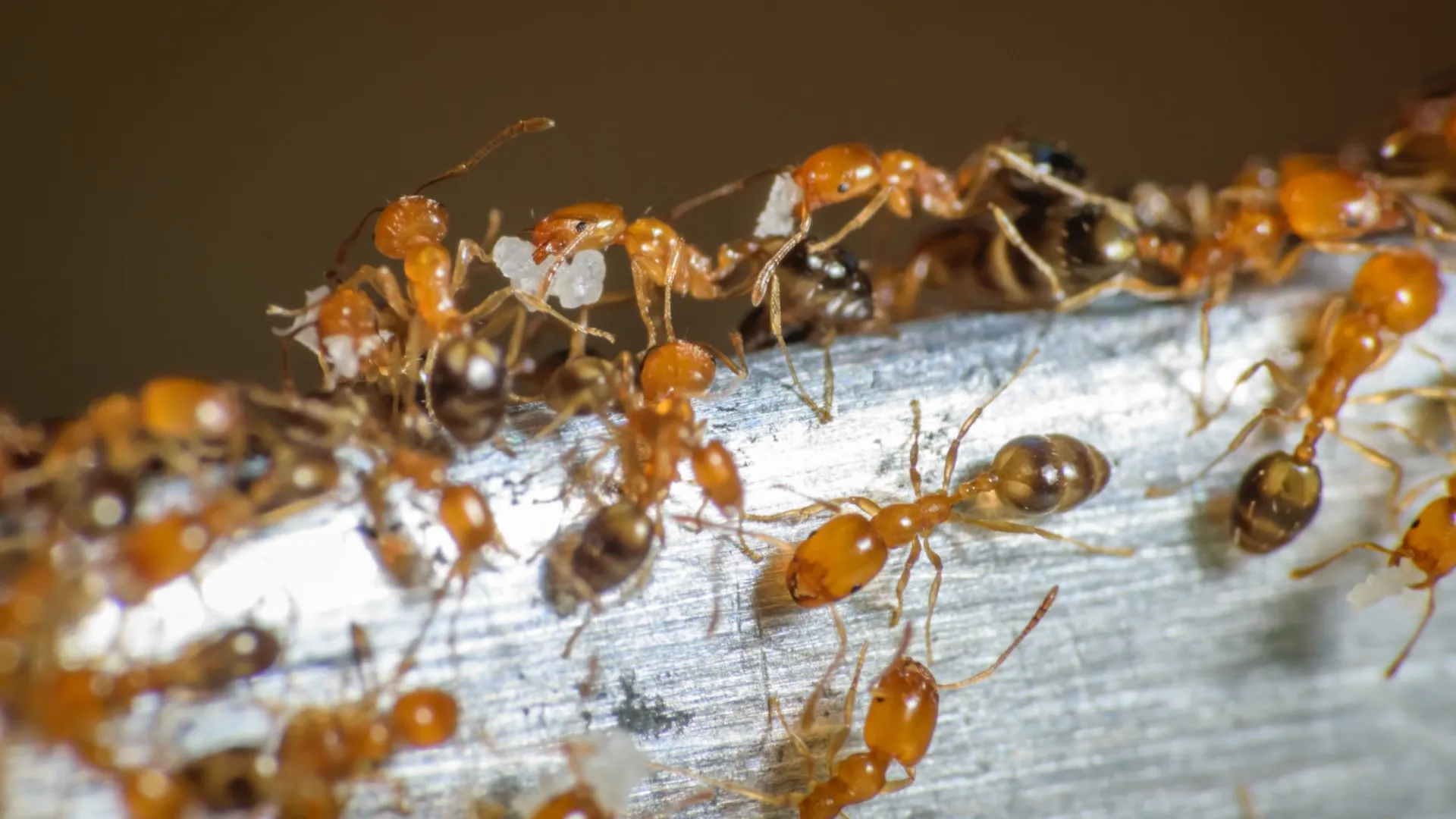
Pharaoh Ant
About Pharaoh Ants
Pharaoh ants get their name from the mistaken belief that they were one of the plagues of Egypt during the time of Pharaohs. This species is currently found throughout the Unites States.
Pest Description:
- Color: Body usually pale, varying from yellowish to reddish with abdomen often darker to black
- Legs: 6
- Shape: Monomorphic with segmented body
- Size: 1/16"
- Antennae: Elbowed with 12-segments with a 3-segmented club
- Region: All
- Habits: Colonies of Pharaoh ants tend to be large, with workers numbering in the thousands. If disturbed, members of the colony will migrate to new locations to establish several new colonies through a process called budding. Pharaoh ants feed on a variety of food sources including sweets, oils and proteins. They will also eat other dead insects.
- Habitat: Pharaoh ants are major problem in homes and institutions such as hospitals, hotels, apartment buildings and prisons. Inside, nests are usually located in warm (80 to 86-degree F) hard to reach locations in wall, behind baseboards, sub-floor areas, attics and cracks and crevices. These ants use electrical and telephone wires to travel through walls and between floorboards.
Outside, Pharaoh ants can be found in shaded areas or under debris. They cannot survive outdoors year-round in the northern regions of the country. - Threats: Pharaoh ants have can transmit more than a dozen disease pathogens including salmonella and Streptococcus pyogenes. They are a major nuisance in hospitals where they can enter wounds, enter IV bottles and will even seek moisture from the mouths of sleeping patients.
